A reclined mode addresses all the described adverse effects of prolonged sitting. 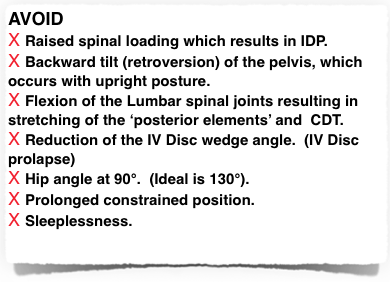 These adverse biomechanical factors have to be addressed to ensure a sitting position that is the least likely to perpetuate, or result in, LBP and other symptoms. The 2T/3M concept sidesteps the disadvantages of an upright sitting mode.
These adverse biomechanical factors have to be addressed to ensure a sitting position that is the least likely to perpetuate, or result in, LBP and other symptoms. The 2T/3M concept sidesteps the disadvantages of an upright sitting mode.
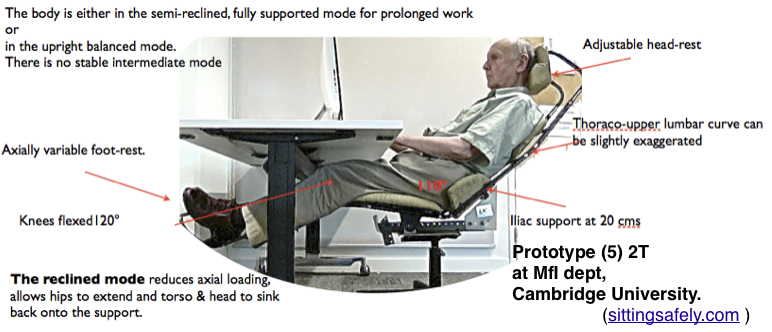 This has to be correctly configured as indicated above and begs further prerequisites for a truly practical work chair. See The 2Tilt RECLINED MODE for fully safe sitting.→
This has to be correctly configured as indicated above and begs further prerequisites for a truly practical work chair. See The 2Tilt RECLINED MODE for fully safe sitting.→
- The diagram below (Okamura research,) shows how force between torso and seat is redistributed to the backrest on moving to the semi-reclined (45°) mode.
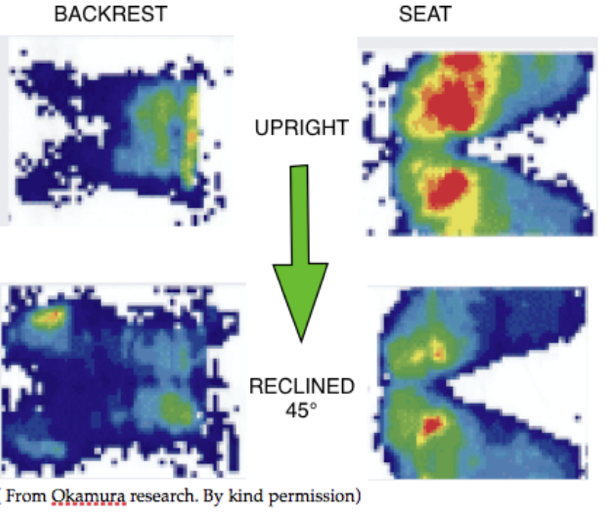
- The force acting on the ischial tuberosities and the seat pan, shown in the ‘upright’ picture, gives axial compression. This is reduced in the 45° reclined mode and be less at 40° or if approximates closer to that of supine lying. This is not made clear in these sorts of diagram. It also shows, unintentionally, the proposed position for a ‘Butt Pocket’ in the FTS mode.
- Intra-discal pressure studies show a fourfold increase of pressure in the upright sitting mode over that when lying supine (Nachemson, 1964) and largely confirmed with more technically advanced work (Sato, 1999). A study by Wilke, (2001) with a single subject, showed a closer approximation of the standing & mid-upright sitting modes.
- These assumptions derived from bio-mechanical studies and clinical observation have been validated by pMRI scans (Smith FW,2007) which show that this mode ensures migration of nuclear material away from dangerous position near the back of the inter-vertebral joint which occurs with upright (90°) sitting . See ☛effects of sitting→
- It is difficult to refute this evidence. Positional MRI→
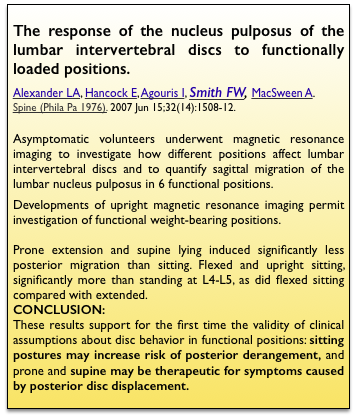
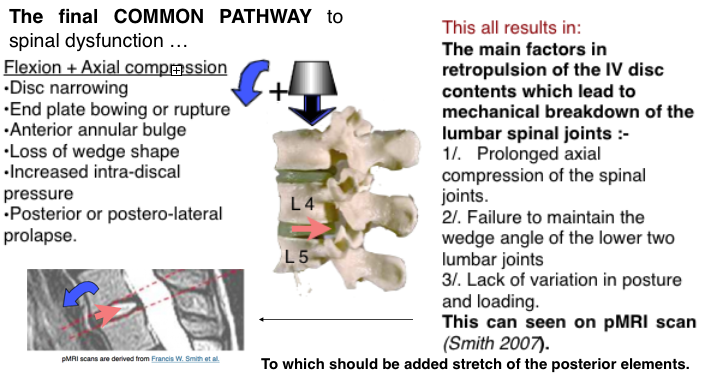 Only a reclined work-mode can avoid all these.
Only a reclined work-mode can avoid all these.
